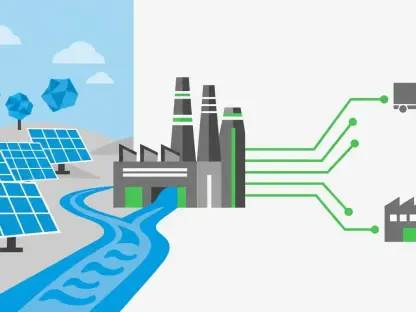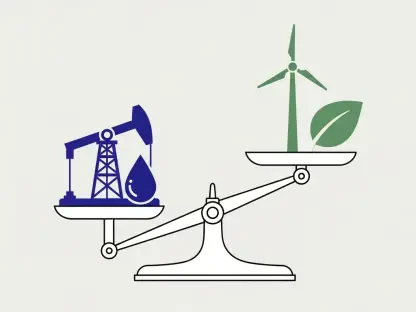Solar panel prices, after hitting a low point, have started to rise again. This trend marks a shift from the previous period characterized by an oversupply of solar panels, which had pushed prices down. Despite the increase, prices remain low compared to historical levels, albeit slightly higher than the lows experienced late last year. This change in pricing dynamics is causing ripples across the solar industry, raising concerns among market participants and prompting an analysis of the factors driving this shift.
Factors Influencing Price Increases
Decrease in Oversupply
The primary catalyst for the recent rise in solar panel prices is the easing of the oversupply issue that had substantially reduced prices in the past. Although there is still an excess supply in the market, it is not as severe as it was during the preceding years. This alleviation in oversupply pressures has allowed prices to stabilize and begin to climb. The alignment of supply and demand is a critical aspect of pricing, and the current trend indicates a balancing act that is reshaping the solar market.
With manufacturers reducing the rapid pace of production seen during the oversupply period, the market is experiencing a gradual correction. This recalibration is reflected in the modest price increases observed. The previous glut of panels had created an environment ripe for lower prices, benefiting consumers but straining manufacturers’ profitability. As the industry’s production levels and demand start to converge, pricing sees upward momentum, signaling a healthier, albeit more expensive, market landscape.
Increased Domestic Demand in China
China, a dominant force in global solar panel production, has seen a notable increase in its domestic demand for solar panels. This surge in internal demand is exerting upward pressure on prices worldwide. As China prioritizes fulfilling its domestic energy needs, fewer panels are available for export, thereby affecting the supply available to other countries. The sustained investment by the Chinese government in renewable energy infrastructure underscores a commitment to reducing carbon emissions and meeting energy goals, thereby increasing internal consumption of solar technologies.
This shift in the demand dynamics within China impacts global prices, as other markets now compete for a limited supply of available panels. The economic impact is significant, affecting both the cost structures and strategic planning of international buyers. The prioritization of domestic markets by the world’s largest producer reshapes the global supply chain, leading to heightened competition and, consequently, elevated pricing.
Tariffs on Chinese Panels
The influence of tariffs on Chinese-manufactured solar panels is another pivotal factor contributing to the rise in prices, particularly within the United States. Initially imposed by President Donald Trump and continued under President Joe Biden, these tariffs aim to protect domestic manufacturing but have inadvertently increased the cost of imported panels. The tariffs, set to counteract what was perceived as unfair trade practices, have made Chinese panels more expensive for U.S. importers, altering the cost dynamics within the market.
These import duties increase the financial burden on U.S. solar developers, potentially slowing down the pace of project deployments due to higher material costs. While the intent behind the tariffs focuses on nurturing domestic manufacturing capacities and reducing reliance on foreign suppliers, the immediate effect is felt in the price surges passed on to consumers. The long-term implications of these tariffs remain a subject of debate, affecting market strategies and pricing outcomes.
Shift in Supply Chain
Role of Southeast Asian Countries
Following the imposition of tariffs on Chinese solar panels, the supply chain has undergone significant shifts, with Southeast Asian countries like Cambodia, Malaysia, Thailand, and Vietnam emerging as major suppliers to the United States. This diversification of sources aims to mitigate the impact of tariffs and ensure a steady flow of solar panels into the U.S. market. These countries have ramped up production capabilities to accommodate the increased demand from markets affected by the tariffs on Chinese imports.
However, this shift in the supply chain has not come without its complications. While Southeast Asian manufacturers have quickly adapted to meet the demand, their full integration into the global supply chain has introduced new logistical and regulatory challenges. Additionally, this diversification has led to increased scrutiny and regulatory oversight to ensure compliance with trade policies, impacting the overall efficiency and cost-effectiveness of the supply paradigm. This transition signifies not just a geographical shift in manufacturing but an evolution in the global trade dynamics of the solar industry.
Controversy Over Solar Components
An ongoing controversy surrounds whether Chinese solar components are being rerouted through these Southeast Asian countries to circumvent the imposed tariffs. This practice, if proven, would undermine the tariffs’ objectives and create complexities in ensuring fair trade practices. The U.S. government and trade bodies are actively investigating allegations of this sort, adding a layer of uncertainty and potential regulatory repercussions. Such controversies highlight loopholes in trade policies and stress the need for stringent enforcement mechanisms.
The ambiguity surrounding the origin of solar components poses challenges for policymakers and industry stakeholders alike. Ensuring traceability and transparency in the supply chain is crucial for maintaining compliance and fostering trust among international partners. This controversy emphasizes the intricate balancing act between promoting domestic industries, managing international relations, and maintaining the integrity of the global market. The potential implications for supply chain management, alongside regulatory measures, present an area of focus for market participants navigating this complex landscape.
Specific Price Predictions
Analyst Insights
Industry analysts, including Elissa Pierce from Wood Mackenzie, offer projections that underline the pricing trends across the global solar market. Pierce predicts that the average global price for panels made in China will rise from 9.5 cents per watt in the first quarter to 10.1 cents per watt in the second quarter of the year. These figures represent a tangible increase and reflect broader market dynamics influencing pricing structures. The insight provided by analysts helps stakeholders anticipate market movements and make informed decisions based on emerging trends and economic indicators.
This price increase is attributed to several interconnected factors, including production costs, supply chain efficiencies, and raw material availability. Analysts’ insights draw from a comprehensive assessment of market conditions, providing a valuable perspective for industry participants. The nuanced understanding of these projections helps in strategic planning and optimizing procurement processes. As the market continues to evolve, such analytical foresight becomes indispensable for navigating the complexities of the solar industry.
U.S. Market Trends
In the United States, the rising trend in solar panel prices is particularly evident with double-sided “TOPCon” panels, a high-efficiency polysilicon variant that has gained prominence in the market. Prices for these panels are expected to increase from 30.8 cents per watt to 33.7 cents per watt. This trend indicates a significant shift in the cost landscape for high-performance solar products, influencing decisions surrounding the adoption and investment in advanced solar technologies. The growing preference for high-efficiency panels underscores the industry’s movement towards maximizing output and performance in energy production.
The price hike in the U.S. market is influenced by several factors, including tariff impacts, supply chain adjustments, and regional demand fluctuations. The emphasis on high-efficiency panels symbolizes a broader industry trajectory towards optimizing energy yields and sustainability goals. As U.S. markets respond to these pricing trends, the strategic focus on cost-effective and high-output solar solutions will shape the future of solar deployment. Evaluating trends and adapting to market conditions remain crucial for stakeholders aiming to capitalize on the evolving solar landscape.
Market Segments Affected
Utility-Scale Solar
The utility-scale solar segment, which involves large projects feeding electricity into the grid, has been significantly impacted by the previous period of oversupply and subsequent price corrections. The sector benefited from lower prices during the oversupply phase, allowing developers to procure panels at reduced costs and boost project feasibility. However, the recent price increases pose new challenges, potentially affecting the economics of future utility-scale solar projects.
As prices ascend, utility-scale developers may face tighter budgets and adjust their financial models to accommodate higher material costs. This segment’s dependency on large volumes of panels makes it particularly sensitive to price fluctuations. The balance between cost and scale becomes a critical factor in continuing the growth trajectory of utility-scale solar initiatives. Developers are exploring innovative financing mechanisms and strategic partnerships to mitigate the impact of price rises and ensure the viability of large-scale solar installations.
Distributed Solar
Distributed solar systems, which include customer-owned installations on rooftops and in residential or commercial yards, have shown a different pricing trend. In this segment, price shifts appear less pronounced compared to utility-scale projects. According to Emily Walker from EnergySage, the median cost per watt for rooftop solar has remained relatively stable, from $2.50 per watt in June to $2.49 per watt in March. This stability suggests that solar installers might be absorbing the shifts in panel costs to maintain competitive pricing for end consumers.
The resilience in the distributed solar market indicates a robust demand for residential and small-scale commercial installations. Installers in this segment often have greater flexibility in pricing strategies and can better manage the costs through optimized supply chain practices and economies of scale at localized levels. The relative stability in distributed solar prices reinforces the importance of accessibility and affordability in promoting widespread adoption. This segment’s adaptability serves as a buffer, sustaining the momentum in the residential solar market despite broader industry uncertainties.
Uncertainty in the Solar Market
An overarching theme within the U.S. solar industry is the pervasive sense of instability, driven by potential policy changes, ongoing tariff disputes, and shifts in demand dynamics. This instability is affecting stakeholders’ confidence and their strategic decision-making processes. Market participants are navigating a complex landscape where external factors such as geopolitical tensions, regulatory shifts, and economic fluctuations play significant roles in shaping market conditions.
Renewable energy trade groups are actively lobbying to maintain bipartisan support in Congress, especially to oppose any reduction or elimination of tax credits seen as crucial to industry stability. These efforts emphasize the industry’s reliance on a favorable policy environment to sustain growth and development. The advocacy for stable policies reflects the need for a predictable regulatory framework to foster investment and innovation in solar technologies. The interplay between policy, market dynamics, and industry growth continues to be a defining feature within the solar sector.
Federal Policy and Incentives
Investment Tax Credit
Central to the U.S. policy framework supporting solar energy is the Investment Tax Credit (ITC), which provides a 30 percent credit on the costs of a solar project. This federal policy has been a cornerstone of solar energy development, driving substantial investment and deployment across various market segments. The ITC’s role in reducing upfront costs and improving the financial attractiveness of solar projects underscores its importance in the overall growth strategy of the industry.
Despite other policy changes under the Trump and Biden administrations, the ITC remains a critical incentive for advancing solar energy adoption. The continuation of this tax credit is vital for maintaining the momentum in the solar market, particularly amid rising panel prices and other economic uncertainties. The ITC’s influence on project economics helps offset the increased costs, ensuring that solar installations remain financially viable and competitive compared to traditional energy sources.
Potential Policy Changes
The potential for further tariffs or adjustments to tax credits presents a major concern for the solar industry, introducing a layer of uncertainty that could affect pricing, demand, and overall market dynamics. Policymakers’ decisions on tariffs and tax credits can either bolster the industry’s growth trajectory or hinder its progress, making policy predictability a critical factor in strategic planning. The industry closely monitors these developments, advocating for policies that support sustainable growth while balancing trade and economic interests.
Adjustments to existing policies or the introduction of new ones could reshape the competitive landscape, influencing cost structures and market positioning. The sector’s resilience and adaptability to such changes will be tested, highlighting the need for robust strategies and proactive engagement with policymakers. Ensuring a supportive policy environment remains essential for advancing renewable energy goals and fostering innovation in the solar industry. Policymakers’ alignment with industry needs will significantly impact the future direction and success of solar energy development.
Related Energy Transition Stories
Green Bank History and Challenges
U.S. efforts to create a “green bank” aimed at providing loans for energy projects have faced significant challenges, including legal battles against policy decisions by the previous administration. These green banks are envisioned to support sustainable energy initiatives through financial backing, promoting innovation and deployment of clean energy solutions. However, the regulatory and political hurdles encountered reflect the complexities of establishing such financial institutions within the broader renewable energy landscape.
The evolution of green banks highlights the intersection of financial innovation and policy frameworks in fostering a green energy transition. Addressing these challenges is crucial for realizing the potential of green banks to catalyze large-scale adoption of renewable technologies. Effective policymaking and regulatory support can enable green banks to effectively contribute to the broader energy transition, ensuring accessible financing for diverse energy projects.
Battery Recycler Financial Struggles
Li-Cycle, a Canadian company specializing in battery recycling, is encountering financial challenges that jeopardize its ability to meet the conditions of a $475 million federal loan aimed at establishing a recycling facility in New York. The company’s financial struggles underscore the complexities and risks involved in scaling up advanced recycling technologies. This situation illustrates the broader challenges faced by the renewable energy sector in securing sustainable financial backing for innovative projects.
The financial viability of recycling initiatives is critical for supporting the circular economy within the energy transition. Ensuring adequate funding and addressing financial hurdles can enhance the industry’s capacity to recycle and repurpose critical materials, contributing to sustainability goals. The outcome of Li-Cycle’s financial struggles will be closely watched as an indicator of the feasibility and prospects of scaling battery recycling technologies in the renewable energy ecosystem.
Reduced Hydropower Exports
Hydro‑Québec, a major player in North America’s renewable energy sector, has ceased exporting electricity to the New England grid due to low prices amidst ongoing trade tensions between the U.S. and Canada. This development highlights the interconnectedness of energy markets and the impact of international trade relations on energy supply chains. The decision to halt exports reflects strategic adjustments in response to unfavorable market conditions and geopolitical dynamics.
The halt in hydropower exports underscores the broader implications of trade policies on renewable energy flows and market stability. It also points to the need for diversified energy strategies that can withstand market and political uncertainties. The reconfiguration of trade dynamics within the energy sector calls for adaptive policies and collaborative approaches to ensure resilience and continuity in renewable energy supply chains.
Tesla’s Sales Decline
Tesla, a prominent electric vehicle manufacturer, reported a 13 percent decrease in sales for the first quarter, attributed to the lack of compelling updates to its lineup and CEO Elon Musk’s political activism. This decline in sales spotlights the volatility within the electric vehicle market and the influence of corporate leadership on consumer perceptions and market performance. The competitive landscape of the EV market requires constant innovation and strategic brand management to sustain growth.
Tesla’s sales decline serves as a reminder of the critical importance of product innovation and market responsiveness in retaining consumer interest and driving adoption. The interconnected factors influencing Tesla’s market performance highlight the dynamic nature of the EV sector and the broader energy transition. As market leaders navigate these complexities, strategic adaptability and innovation will remain key drivers of success in the evolving renewable energy landscape.
Hyundai’s Shift in Production Plans
Hyundai is considering shifting a portion of its automobile production from China to South Korea. The move is part of a strategic response to declining sales in the Chinese market and increased global competition. By relocating production to South Korea, Hyundai aims to optimize its manufacturing processes, enhance its competitive edge, and align its operations with the company’s overarching goals for sustainability and innovation.
Facing slower-than-expected sales growth in the electric vehicle sector, Hyundai has revised its plans for a new plant in Georgia, initially intended to exclusively produce EVs. The plant will now also manufacture gas-electric hybrids. This shift indicates a strategic pivot in response to market realities, showcasing the challenges automakers face in transitioning to fully electric portfolios. The adjustment underscores the importance of flexibility and market alignment in manufacturing strategies amid the energy transition.
Hyundai’s decision reflects the broader industry trend of balancing between traditional and emerging vehicle technologies to meet market demands and sustainability goals. The production shift also emphasizes the importance of analyzing market signals and consumer behavior in strategic planning. As automakers adapt to the evolving landscape, integrating hybrid technologies provides a pragmatic approach to bridging the gap towards a full transition to electric mobility.
Navigating Industry Uncertainty
After reaching their lowest point, solar panel prices have started increasing once more. This shift marks a noticeable change from the previous period characterized by an oversupply of solar panels, which had resulted in lower prices. Although solar panel prices have risen, they remain relatively low compared to historical levels, but are slightly higher than the bottom prices seen late last year.
These changing pricing dynamics are causing concern within the solar industry, prompting market participants to analyze the factors behind this shift. The rise in prices may be due to various factors, including increased demand, production costs, and potential trade barriers. Additionally, the global push towards renewable energy sources could be influencing these price changes, as governments and corporations continue to invest in green energy solutions.
Solar energy market analysts are closely monitoring these fluctuations to understand their impact on future solar installations and the overall growth of the industry. The price trends could affect the affordability of solar energy for consumers and impact the profitability of solar companies. Stakeholders are keen to adapt to these changing conditions to ensure the continued expansion of solar power as a viable and sustainable energy source. Despite the recent uptick in prices, the overall cost of solar panels is still considered affordable, encouraging ongoing investment and adoption in residential, commercial, and utility-scale projects across the globe.









